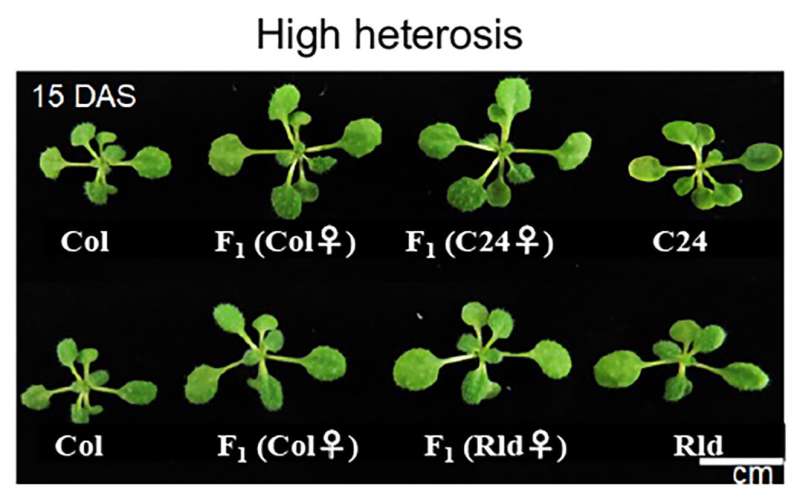

Heterosis is a phenomenon in which F1 hybrids, generated by crossing different species or strains, exhibit more vigorous growth than their parents. F1 hybrids are grown for many crops on the market today. However, although heterosis has been known for more than 100 years, its mechanism has not yet been completely understood.
In a study recently published in the journal Scientific Reports, researchers used a total of 202 Arabidopsis lines as model plants. The plants were grouped according to the level of heterosis on the basis of the phenotypic analysis of flowering time, seed size, seed germination time, and 15-day postgermination fresh weight.
The comparative analysis of heterosis expression levels between high- and low-heterosis combinations revealed that the production of intermediate metabolites of the TCA cycle (carbon metabolic circuit in mitochondria) was specifically altered in heterosis combinations that exhibited high levels of heterosis.
The researchers believe that understanding the molecular mechanisms of heterosis might contribute to the efficient development of F1 breeding methods and high-biomass crops.
More information:
Quynh Thi Ngoc Le et al, Morphological and metabolomics profiling of intraspecific Arabidopsis hybrids in relation to biomass heterosis, Scientific Reports (2023). DOI: 10.1038/s41598-023-36618-y
Provided by
University of Tsukuba
Citation:
Increase in biomass due to changes in F1-hybrid metabolite (2023, June 30)
retrieved 30 June 2023
from https://phys.org/news/2023-06-biomass-due-f1-hybrid-metabolite.html
This document is subject to copyright. Apart from any fair dealing for the purpose of private study or research, no
part may be reproduced without the written permission. The content is provided for information purposes only.